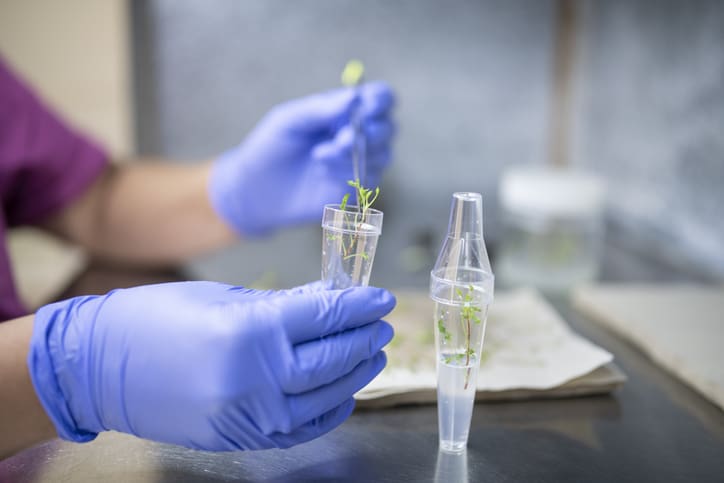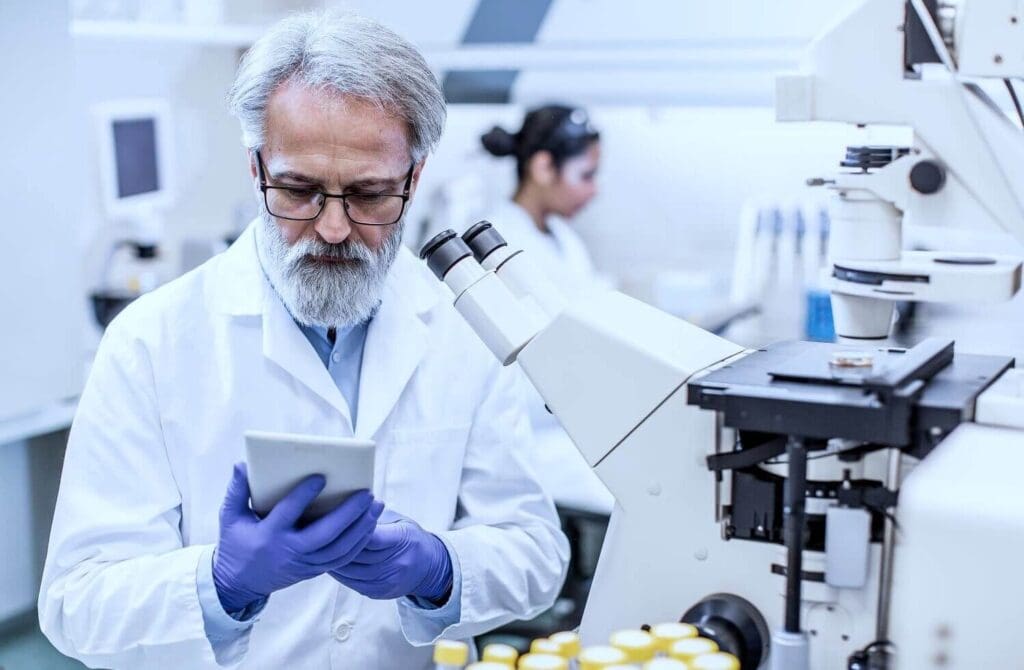The use of cell culture is invaluable for researching physiological and biochemical aspects of cell activity under different experimental conditions.
Maintenance of cell cultures within the application, though, is often completed manually, requiring repetitive (often banal) work where small mistakes can lead to large variabilities in experimental outcomes.
Automated cell line maintenance systems allow for more freedom in the way that time in the laboratory is spent and facilitate growth and high-throughput experimental design (1).
The challenge of cell line maintenance
Maintenance of cell lines relies on efficient, skilled technicians completing working long and antisocial hours to execute lengthy and repetitive tasks.
Not only are the technicians’ talents probably better placed elsewhere, but human error is also possible even with the most skilled lab workers, and mistakes can result in contaminations and variable cell growth which can lead to differences in experimental outcomes. This then has further effects on staff efficiency and can hinder downstream operations.
Due to the use of one-use plastics in most cell culture applications, sustainability and cost-effectiveness are also affected by human error.
Without implementing some form of automation, scaling up operations can be difficult as the potential for mistakes during manual handling increases. This can hinder the growth and research potential of the laboratory.
What aspects of cell line maintenance can be automated?
Automated cell culture solutions are able to support cell line maintenance at all stages, such as passaging, incubation, and changing growth media, as well as measuring cell viability, confluence, and cell counts. Furthermore, cells can be automatically sampled for assaying and also cryopreserved and stored.
Cells can also be monitored during automated cell line maintenance, using machine learning and artificial intelligence to develop algorithms able to detect changes in the morphology and phenotype of the cell (2).
Benefits of introducing an automated cell culture maintenance system in your lab
Quality of life: Automation can take over the late evenings and weekends that might have otherwise been spent by staff in the lab changing media or treating cells.
Using automation also increases safety within the lab as staff are at lesser risk of repetitive strain injuries from hours of manual work.
Automata can help to revolutionise cell culture processes, allowing staff to work on other processes within the lab.
Accuracy and reliability: Machines are programmed to a higher level of precision than even the most skilled worker, and so the risk of contamination, errors in seeding densities and pipetting mistakes are lower.
This also reduces the potential for having to throw away single-use plastics that may have been used during manual handling, increasing the sustainability of the work.
Efficiency: Automation of cell line maintenance allows an increase in throughput by being able to use significantly larger assay plates, round-the-clock monitoring of large numbers of cultures and accurate pipetting completed quickly.
Scale: Introducing automation into the laboratory facilitates larger-scale experiments, allowing more research to be conducted than would be possible via manual handling.
If this is introduced when the amount of work being completed is relatively small, then it allows for growth when needing to scale up.
Our approach to automating mammalian cell cultures is improving the scale and quality of labs, increasing the potential for researchers to take on larger projects whilst also maintaining regulatory compliance.
Cost-effectiveness: Reducing the amount of time that is spent on cell line maintenance, and subsequently reducing the wastage of single-use plastic saves on manpower and resources that can then be utilised elsewhere in the laboratory increases the cost-effectiveness of automation (3).
Automation can benefit one or multiple aspects of cell line maintenance and can help laboratories to scale up operations without risking potential human error from the manual handling of cells.
It will also free skilled lab workers to work in parallel with automation on other projects and allow for growth into high-throughput work.
Discover how Automata can help revolutionise repetitive cell culture processes today.
References
1. Kempner ME, Felder RA. A Review of Cell Culture Automation. JALA: Journal of the Association for Laboratory Automation. 2002;7(2):56-62. doi:10.1016/S1535-5535-04-00183-21. Kempner ME, Felder RA. A Review of Cell Culture Automation. :7.
2. Doulgkeroglou MN, Di Nubila A, Niessing B, König N, Schmitt RH, Damen J, et al. Automation, Monitoring, and Standardization of Cell Product Manufacturing. Front Bioeng Biotechnol. 2020 Jul 14;8:811.
3. Moore. S. Cell Culture Automation: An Overview. [Internet]. Azolifesciences.com (2020). Available at: https://www.azolifesciences.com/article/Cell-Culture-Automation-An-Overview.aspx

Scale Up Cell Line Development with Automation
Learn how automation enhances efficiency, traceability, and scalability in cell line development, transforming CLD into a high-throughput, data-rich process.

The lab automation platform that removes bottlenecks and accelerates drug discovery at…
Read more Automation solutions for drug discovery
We explore common problems in plus the advantages and disadvantages of plant…
Read more Plant tissue culture: how automation can help
Automation has the potential to help achieve high-quality, repeatable results delivered quicker…
Read more Automated cell biology labs of the future